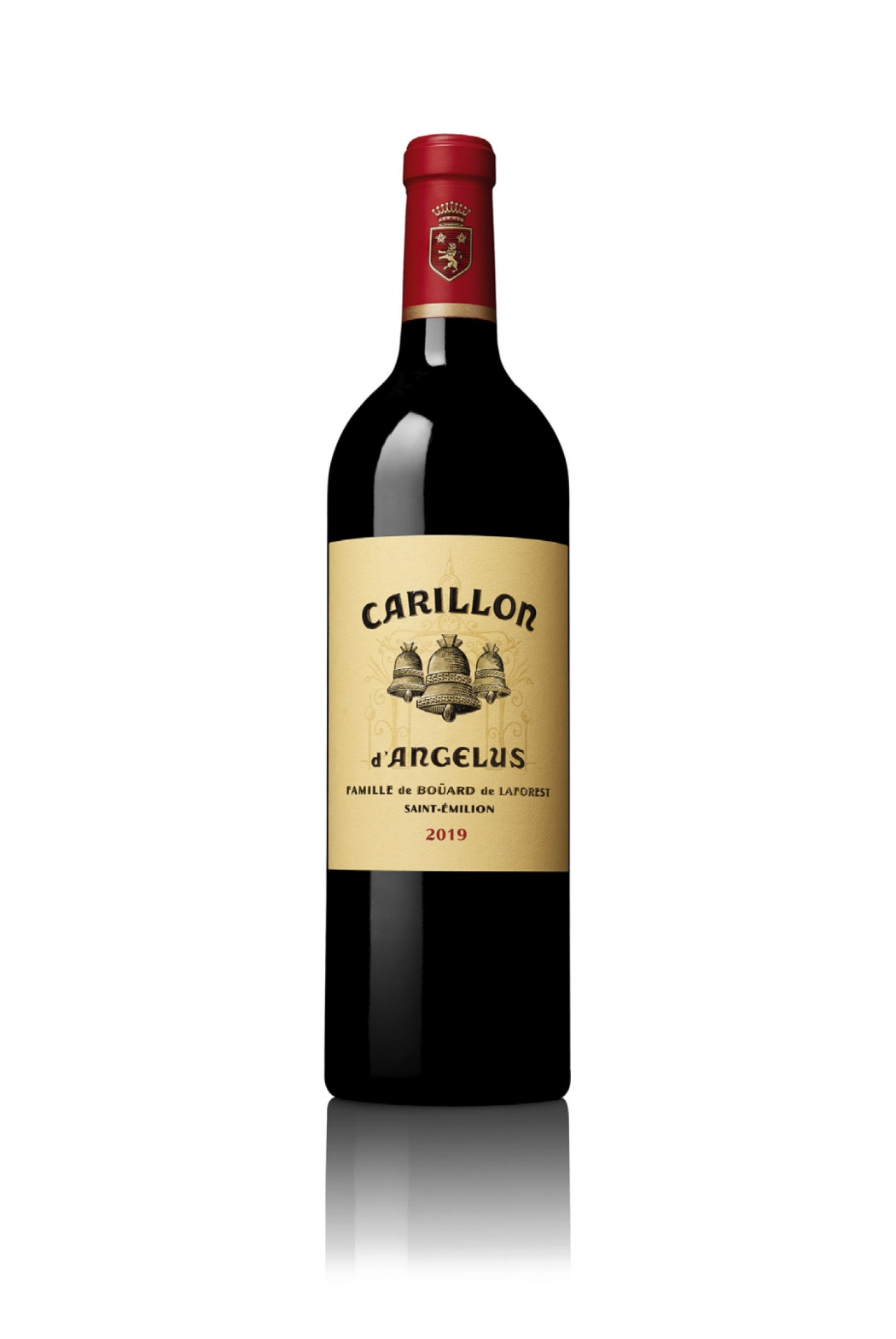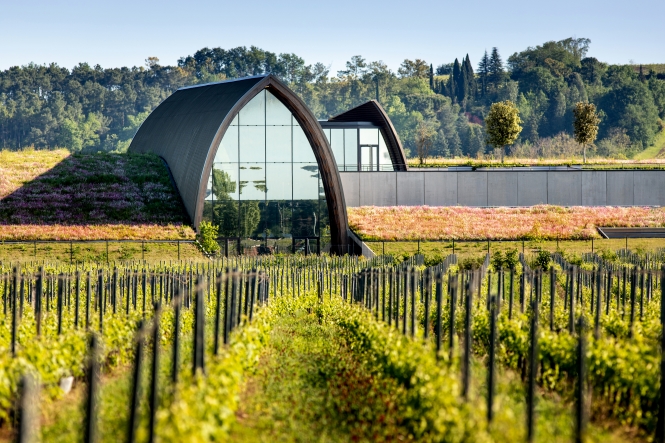
Chai Carillon
The old cellars of Carillon d’Angélus and N°3 d’Angelus - located on the Angelus estate - had become too cramped to accommodate new state-of-the-art and high-performing equipment. Being located within a UNESCO World Heritage Site, their potential for being extended was restricted, while heavy constraints would have been made on their architectural design. It was therefore decided that a new winery should be created from scratch.
A search for a suitable area in which to build these new facilities was then undertaken. However, within Saint Emilion itself the necessary surface area for the construction of a winery proved impossible to find. The range was therefore widened to include neighbouring communes, and a suitable one was found at Saint-Magne de Castillon.
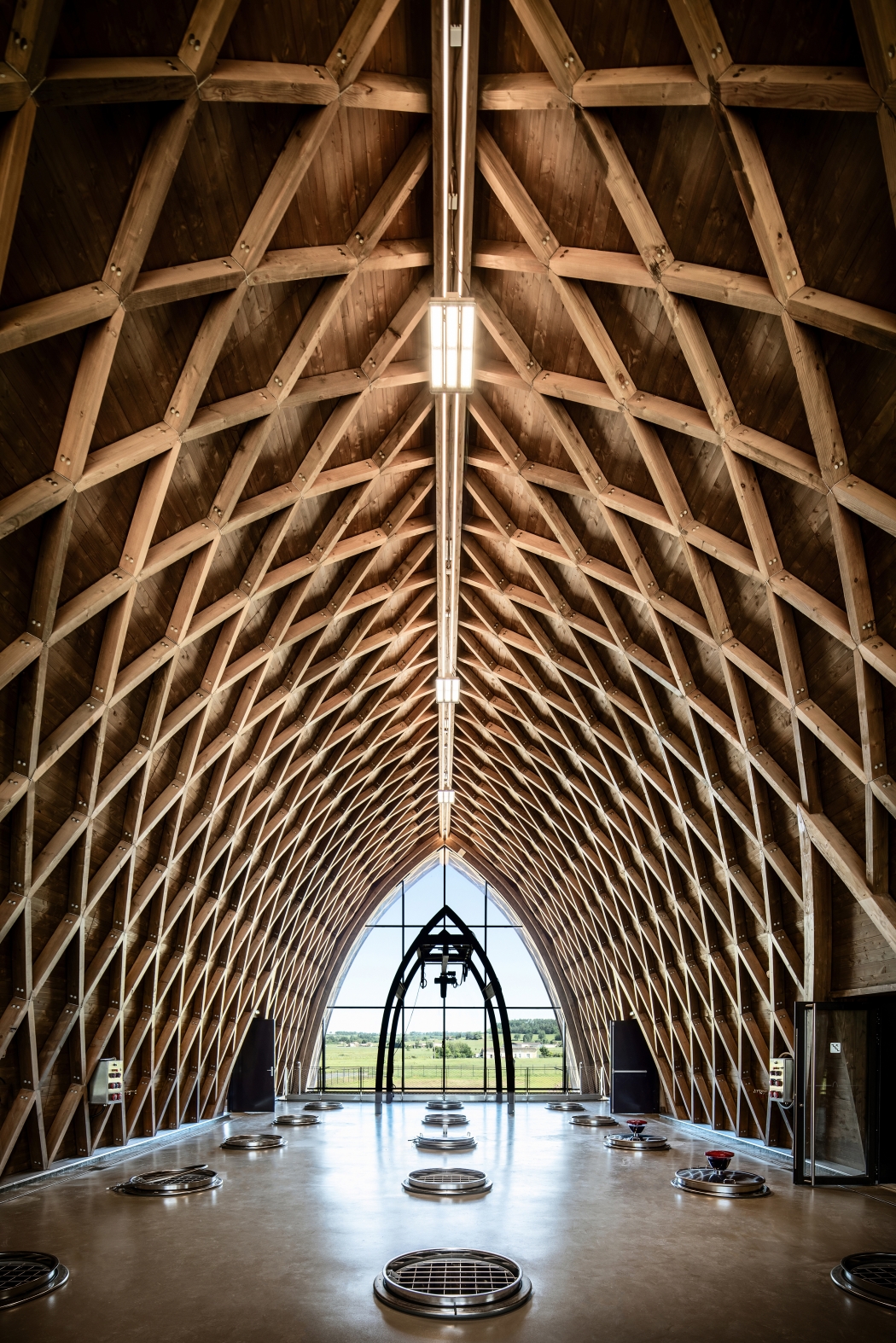
Technical, environmental and æsthetic considerations were given equal importance in the design of this new state-of-the-art winery, which has been equipped with the finest wine-making tools.
The 4,400 m² winery building, set among 3.3 hectares (8.1 acres) of land, is half- underground and features a green roof. The new facilities include a harvest reception area with a laser optical sorting line, a vinification room, a cellar for the malo-lactic fermentation and a barrel cellar. A bottling and packaging line will be added to complete these facilities.
The vinification cellar with its 18 inverted tronco-conical vats, inspired by the winemaking techniques at La Fleur de Boüard in Lalande de Pomerol, features a vat-filling system using hoists and a vat elevator, allowing 100% gravity-flow.
Nitrogen-generating equipment provides permanent protection for the wines and controls oxygen levels both during the vinification and the ageing process.
Photovoltaic solar panels enable the production of a part of the electricity needs for the functioning of this new winery.
The building has received BREEAM (Building Research Establishment Environmental Assessment Method) certification, the British equivalent of HQE (Haute Qualité Environnementale/High Environmental Quality).
The pursuit of ever more rigorous standards and enhanced performance commits Carillon d’Angelus to active R & D undertakings, from the vines to the cellars, from the development of vine-growing techniques to the invention of new approaches.
The new Carillon cellars are wonderfully conducive to trialling multiple prototypes, ranging from electronic hydrometers to grape washing material. If these trials are successful, they will serve to equip all of our cellars within a few years, enhance the work of our teams, and optimise the quality of the wines produced, Carillon d’Angelus, N°3 d’Angelus and Tempo d’Angelus.
This winery was completed for the 2019 harvest.
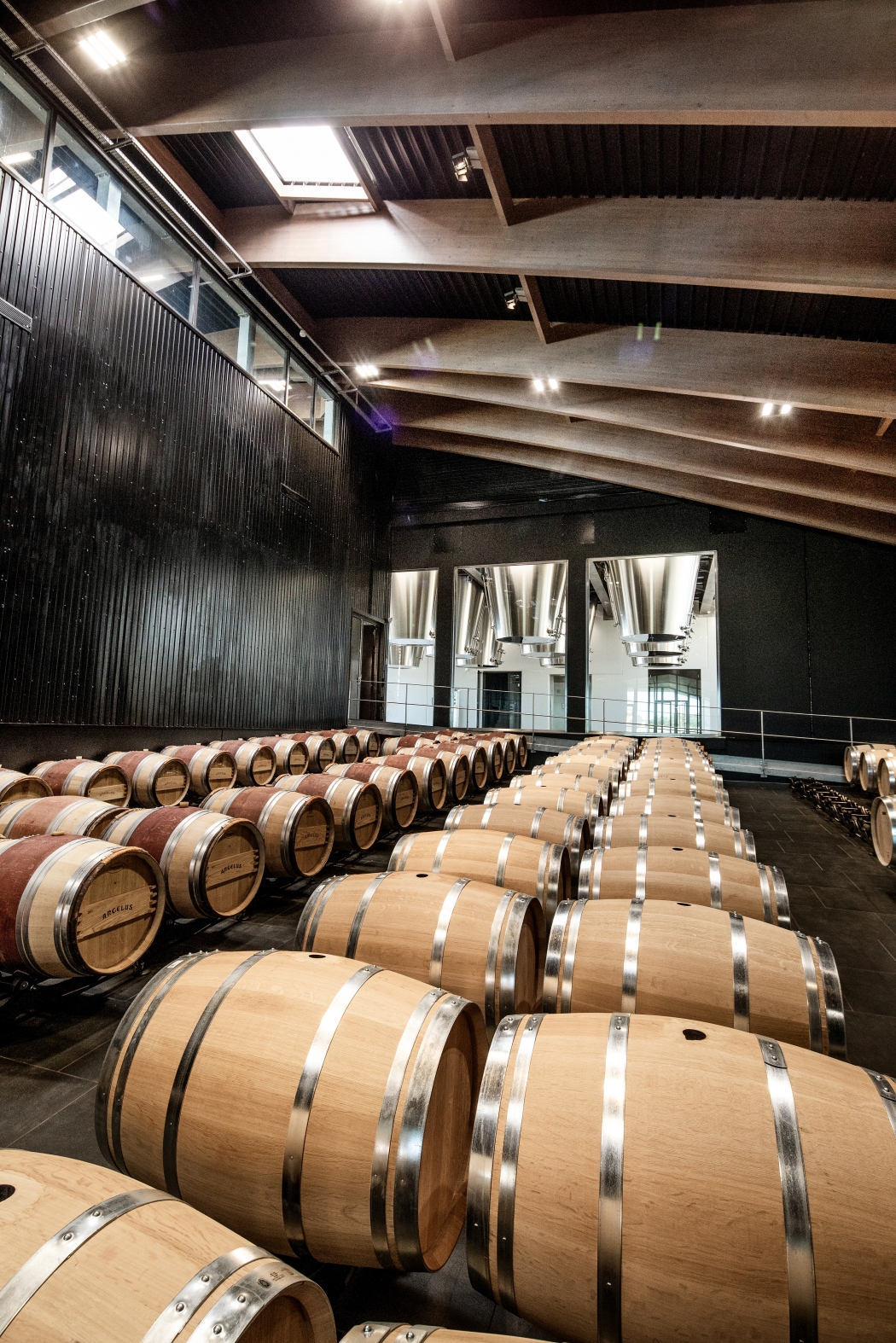
“Since it has a unique definition, Carillon d’Angelus is no longer a simple Second Wine. It is now a great wine in its own right.
It was within this perspective that, before building new cellars for the vinification of its wine, we put in place a policy of acquiring vines grown on high quality terroirs, in order to take our Carillon d’Angelus to the highest possible levels of quality. In less than 10 years, the vineyard surface area devoted to Carillon d’Angelus has increased from 7 hectares (17 acres) to 18 hectares (44 acres).
Today, our spectacular new cellars, which are equipped with the latest, state-of-the-art technology, have helped to make our wines even greater”.
Stéphanie de Boüard-Rivoal
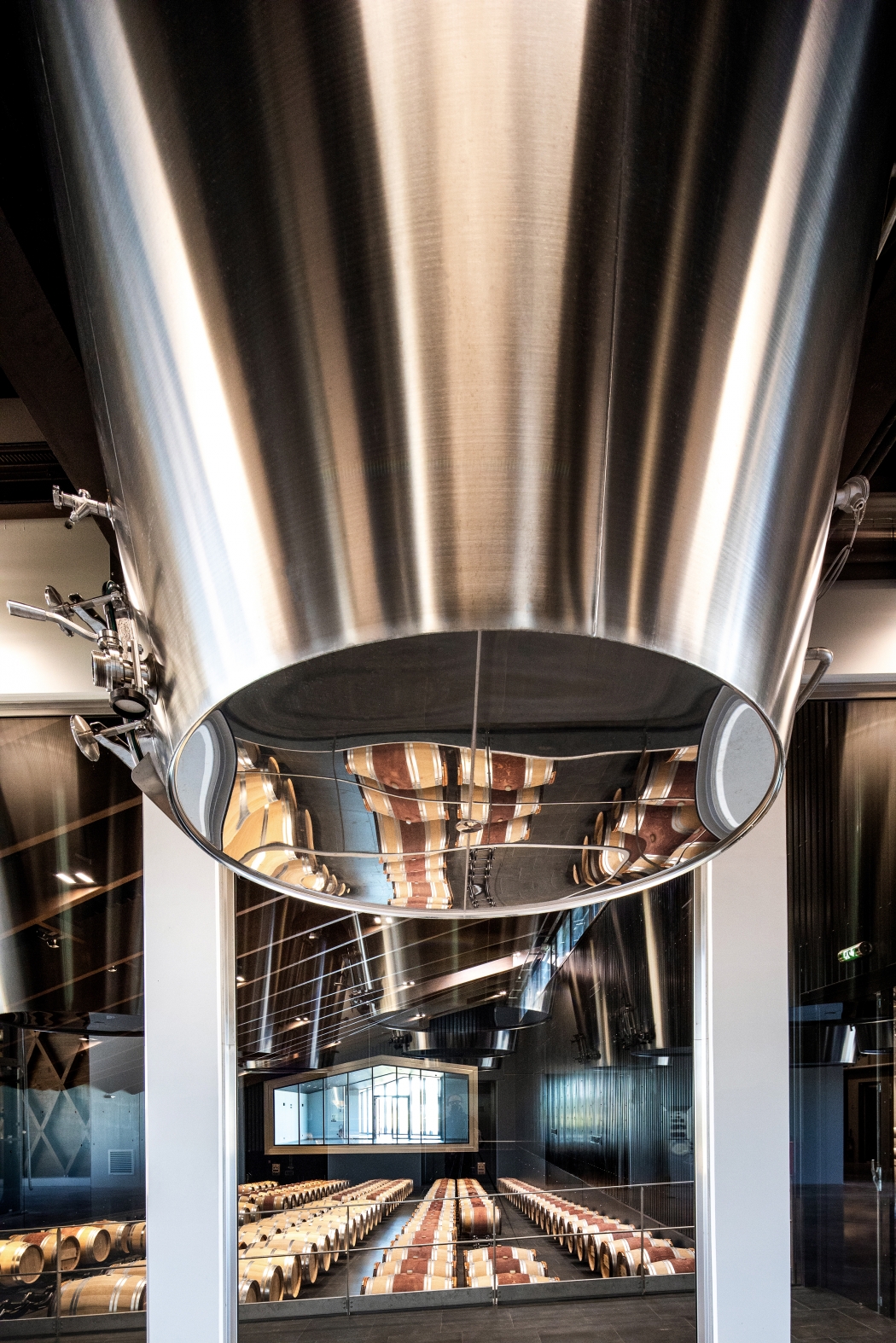
First made in the 1987 vintage, Carillon d’Angelus is a growth in its very own right.
It comes from a variable percentage of Merlot, Cabernet Franc and Cabernet Sauvignon harvested from a selection of plots (18 hectares/44 acres), among the finest Saint-Emilion terroirs made up of clay-limestone and clay-sand-limestone soils.
The vines are tended with the same care and attention as those producing Château Angelus. Careful selection and precision are given equally great importance in both the harvesting and the winemaking. The ageing process in barrels is also carried out in this spirit and is adapted and adjusted to the wine as it matures. The ageing period is a little less long, and half the barrels are in new wood.
Carillon d’Angelus thus presents an identity all of its own and a distinct style expressing fruit character (plums and cherries), velvety tannins and an elegant finish.
Since Saint-Magne de Castillon is outside the Saint-Emilion Grand Cru appellation area, Carillon d’Angelus will adopt the Saint-Emilion appellation as from the 2019 vintage, the first to be vinified in this new winery.
